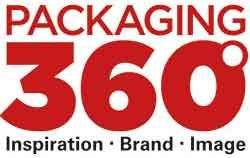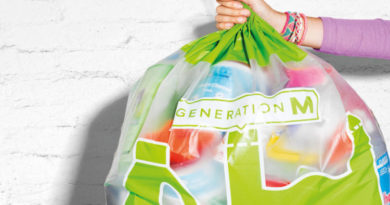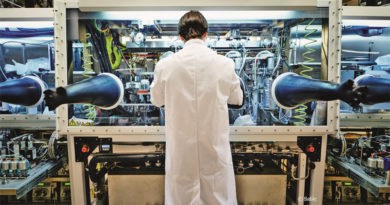Practical solutions in plastics recycling
Several institutes of the German Industrial Research Association Konrad Zuse are working intensively on practice-oriented solutions for more intensive and better recycling of plastics.
Plastics can best be recycled if they are not only available in a single grade, but are also similar in their raw materials. However, manufacturers are reluctant to reveal their recipes. This is where a project by SKZ – Das Kunststoff-Zentrum (FSKZ e.V.) comes in: Without knowing the individual ingredients of the plastics, in a new cooperation project funded by the European Union, the Würzburg scientists record important parameters in production such as temperature, pressure and flow properties of the material, which are made available for recycling by means of digital technologies.
„We are developing a digital toolbox so that the individual ingredients used in the virgin material do not necessarily have to be known in order to produce a high-quality recycling product later,“ explains Dr. Hermann Achenbach from SKZ’s Sustainability division. This means that in future recycling can begin even before the product made from virgin material is even marketed. The project of the SKZ Plastics Centre is primarily aimed at residues from production and commercial waste.
When recycling used plastic material, for example from packaging, the aim is to maintain as high a level of quality as possible. For this purpose, the plastic is compounded with additives in order to achieve the desired properties. „We have developed additives for the recycled goods in order to increase the elongation at break of the starting materials tenfold, so that this material can replace new goods in many high-quality applications,“ explains Achenbach.
ADVERTISEMENT
 FachPack presents solutions on the subject of recycling – throughout the entire packaging process chain and everything associated with it, from materials to function and design to logistics and tracking. More information can be found here.
FachPack presents solutions on the subject of recycling – throughout the entire packaging process chain and everything associated with it, from materials to function and design to logistics and tracking. More information can be found here.Mixtures of several types of plastics
A project of the Institute for Plastics Technology and Recycling (IKTR) also started with production. The reason for this project was the problem of a medium-sized plastics processor. Every day, small amounts of different plastics were left over which were too small to be disposed of and too small to be processed.
Together with the processor, the researchers at the IKTR developed formulations for plastic mixtures. Using a special compatibility mediator, a product consisting of five different components was manufactured with good properties. This plastic mixture could then be used to produce moulded parts for fittings and covers. „The development helps to save raw materials, to use residual quantities economically and to keep storage capacities free,“ explains IKTR CEO Anke Schadewald.
Gluten improves bioplastics
The Plastics Centre in Leipzig (KUZ) operates a circular-flow economy with renewable raw materials. In the production of bio-plastics it is important that the structures of plant raw materials are suitable for demanding applications in consumer and industrial goods. Gluten, known as cereal glue, which KUZ uses for injection-mouldable bio-plastic compounds, helps here. Reason: Gluten can „mediate“ between different reaction partners and establish adhesion.
Building on this, the Leipzig researchers are working on a project sponsored by the Federal Ministry of Economics in which the brittle bioplastic polylactide (PLA) obtained from sugar cane is made more supple with the aid of gluten. „Gluten droplets are stored in the sugar cane-based polylactide. They provide more elasticity. In plastics, gluten is therefore more than just bio putty, because it can change structures,“ says Petra Krajewsky, head of the KUZ division.
The use of recycled materials is expandable
Although the development of valuable recyclates is constantly progressing, the demand for them must be stimulated even more strongly. In 2017, around 14.4 million tonnes of materials were processed for the production of plastics, 4.4 million tonnes for packaging and 3.5 million tonnes for the construction sector. According to Conversio’s „Material Flow Picture Plastics“ study, the proportion of recycled materials averaged around 12 percent. In the case of packaging, the proportion was below average at 9 percent, whereas in the construction sector it was above average at just under 22 percent.
In this context, the institutes of the Zuse Community see themselves as a central partner for a successful environmental service branch. „Projects from our ranks contribute to further increasing the recycling share in the packaging market,“ stresses Dr. Annette Treffkorn, Managing Director of the Zuse Community.




